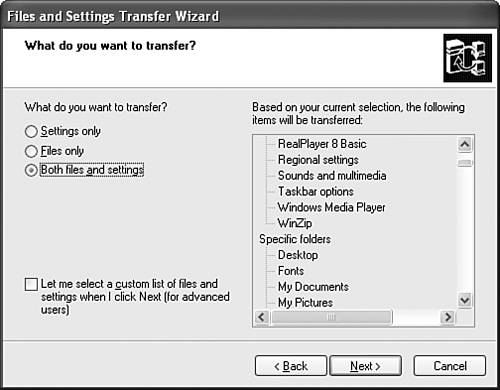Absolute Beginners Guide to A+ Certification. Covers the Hardware and Operating Systems Exam
| < Day Day Up > |
| With hard disk prices so cheap and capacities so high these days, you might want to go ahead and get a new one before you install Windows. However, if you must use a hard disk that contains existing data you want to preserve for a new OS installation, you should transfer the data you want to keep from that drive to other media before you start the installation process. After all, some of it won't be there later. Files in My Documents and your Internet Explorer favorites are wiped out during this type of installation. You can use any of the following methods :
If you use a backup program, you can save space on the storage media compared to drag-and-drop file transfers because of data compression, but the data must be restored to another drive before it can be used. The backup programs included with various versions of Windows support tape and floppy disk backup, but do not support rewriteable CD or DVD drives. Third-party backup programs support a wider variety of tape drives as well as removable-media, rewriteable CD and DVD drives , and external hard disks.
tip
If you want to back up the settings used by software as well as (or instead of) data, you might prefer to use a system migration tool. If you are installing Windows XP, you can use the Microsoft Windows Files and Settings Transfer Wizard. It can be run from the Windows XP CD-ROM on most other versions of Windows (see Figure 16.4). You can transfer the information to a removable-media drive or other drive letter (this could also include a network drive). After the installation is complete, run the wizard again to bring back your information to your computer. Figure 16.4. The Windows XP Files and Settings Transfer Wizard can transfer files, settings, or files and settings, including the contents of the Fonts, My Documents, and other folders.
|
| < Day Day Up > |
